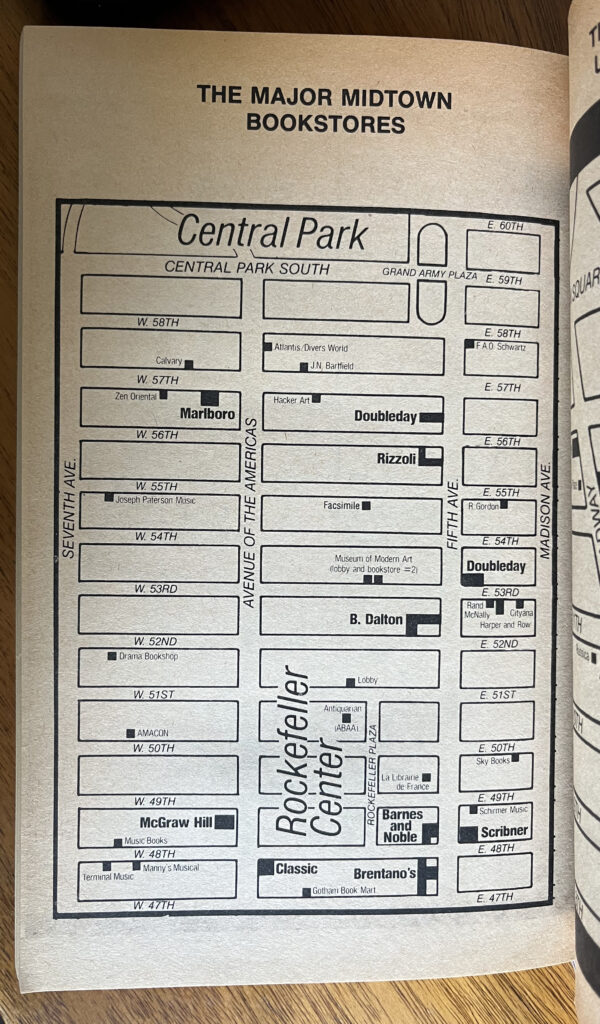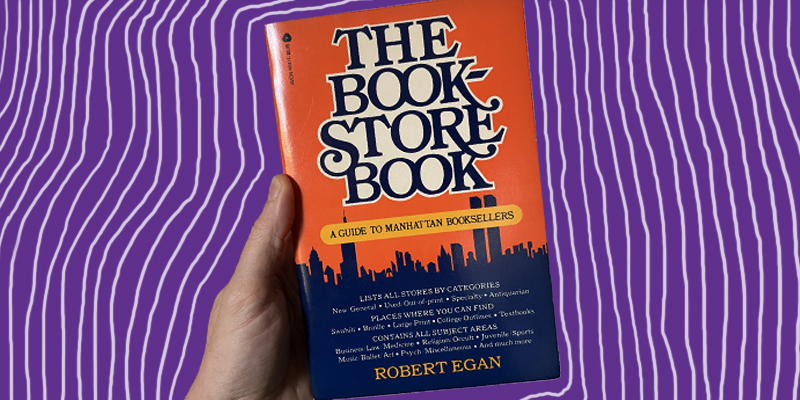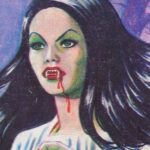1979’s The Book-Store Book documents a lost borough of booksellers.
In 1979, President Jimmy Carter established the Department of Education and was attacked by a rabbit. In 1979, New York City Mayor Ed Koch was in his first term, and The Sugarhill Gang’s “Rapper’s Delight” broke into the Top 40. In 1979, The Deer Hunter won Best Picture, and a total solar eclipse darkened North America. In 1979, The London Review of Books debuted, and Kindred, If on a winter’s night a traveler, and The Hitchhiker’s Guide to the Galaxy were released.
And in 1979, Robert Egan published his 376-page The Book-Store Book, cataloging and sorting over 750 bookstores in Manhattan. A friend lent me a copy (shout-out to Lucas Adams and the Sunnyside Book Table) and flipping through it was a little depressing. Manhattan used to have a lot of bookstores and booksellers—I was struck by just how many places there used to be to buy books. This map alone was pretty jarring:

By my Google Maps estimation, there are still a good amount of bookstores in this area, but at nowhere near this density. Manhattan reamains a great place for book lovers, but Egan’s book makes clear just how much has changed.
Naturally, there’s a lot in Egan’s book that concerns pre-internet systems and books that have been made obsolete. He notes which bookstores offer search services to find books, by either calling around the city or placing an ad in trade journals. There’s also an emphasis on the best places to find restaurant guides, dictionaries, and reference books, all genres that are increasingly not in print in the internet age.
And like most industries these days, there’s a lot of evidence of consolidation in the bookselling world. Nearly all of the local and national chains Egan lists have left us for the great mall in the sky: Paperback Booksmith went under, Waldenbooks was acquired by Kmart and then folded, and B Dalton, Doubleday, and Marboro were each absorbed by Barnes & Noble.
It’s not all bad—there are a fair number of survivors other than Barnes & Noble. The Strand, Rizzoli, Three Lives, Drama Book Shop, The Complete Strategist, The Mysterious Bookshop, Printed Matter, Quest Bookstore at the Theosophical Society, and more are all still around.
It seems like NYC had more bookstores in transit hubs in ’79— every big train station and a fair number of larger subway stations had a bookshop. A little place to browse while I wait for the train sounds perfect, especially now that our cowardly Governor has screwed over the MTA by reneging on congestion pricing.
Speaking of browsing opportunities I’d like to see more of, a bunch of ’79 bookstores were open late. The Idle Hour in Greenwich Village was open until midnight and The Night Owl, also in Greenwich Village, was open until 2:00 AM some nights. Though to be fair, the latter doesn’t seem like it was a true bookstore, but rather a head shop that stocked underground comics. I wonder if any weed shops in the city are selling any books or magazines these days? Do people get the munchies of the mind?
The real joy of browsing this book was encountering the specific bookstores, places that catered to a certain topic or customer, and that I could imagine as gathering places for the like-minded. There was Bridgeworld that carried over 200 books on bridge, The Ballet Shop on the Upper West Side for dance fans, and the coyly named Old Friends on 31st Street: “The ‘old friends’ are the Walt Disney characters and this store sells books concerning Disneyana.” This name was likely a way to avoid a lawsuit, but I also imagine it as a phrase that ’70s Disney Adults used to covertly identify each other: “Pardon me, but are you an ‘Old Friend?’”
There’s also one store specializing in genealogy, two horseback riding supply stores that sell books, six magic shops, and four stores specializing in navigation and ships. Egan also features five political science bookstores, four of which were lefty shops stocking books on Marxism and socialism. The fifth is the outlier: the libertarian Laissez-Faire Books, which stocked “Anti-Authoritarian Paperbacks on feminism, psychology, science fiction, sociology.” The store had deep ties to libertarians, and its opening was attended by many figures now popular with the alt-right and one future Trump biographer who concocted a stunt for his 1974 NY Governor campaign where he had “a woman in a beige body stocking to ride through Central Park like Lady Godiva, on a horse named Taxpayer.” Sounds like an exhausting store.
Egan has a section of UFO bookstores with only one entry: Flying Saucer News on West 45th Street, which had shelf sections like “astral projections, astrology, Eastern philosophies, health, magic, mysticism, occult, parapsychology, Rosicrucianism, self-improvement, UFOs and flying saucers.” The bookstore was run by James S. Rinberg, who also put out a magazine by the same name as his shop. This great blog post about Rigberg and his bookstore includes a great detail: among the declassified documents from Project Blue Book, the Air Force’s official study into UFOs, there was one file that had this note penciled in the margin: “We have file on the Flying Saucer News.”
Overall, the descriptions of the freakier bookstores are fun to read—Egan seems to have been a little scared of these places, and he loves to put words like “comix” and “alternative” in scare quotes. The descriptions of the occult bookstores are a treat and Egan notes which sell crystal balls, robes, chalices, and bats. Not sure what kind of bats we’re talking about here, but I’m interested.
There was also a store called Tzipora and the Wizard in Midtown, that as far as I can tell is related to the Coven of the Blue Star, which still seems to be around today. And I especially wish I could have browsed Occult Books in Greenwich Village:
Occult is a very special bookshop consisting of a small room big enough for one person opening to the sidewalk of Seventh Avenue. Much of the stock is displayed on the sidewalk in the warmer months.
The section on antiquarian booksellers is the most bespoke in the book, and is a long list of names and contact information for people who trade in specific genres. There’s a guy who specializes in “chess, checkers, and draughts,” someone who is looking for books “dealing with memory, mnemonics, the art of memory; genealogy: Hayes, Barnes families,” and someone who doesn’t sell anything but “will buy joke or jest books and magazines.”
The best antiquarian is a guy specializing in “weird/fantasy novels” who goes by “Joseph Amedeo, Bookfinder.” In my head, he’s like Vincent Price in Witchfinder General and rides on horseback around New York State hunting for Conan The Barbarian paperbacks. (Hollywood, get in touch—I’ll start work on the screenplay.)
It’s not surprising that the world of buying and selling books has shifted a lot in 40 years, of course. I didn’t put down Egan’s book with a ton of “I was born in the wrong decade” faux nostalgia. New York City has become better in so many ways since the ‘70s.
But the line that sticks with me most, and seems to be the biggest indication of how things have changed, is in the introduction. Egan writes optimistically: “Backed by big money, stores are carrying more variety of books than ever before.” Optimism about “big money” in the books industry is a quaint phrase, a relic from before the mergers and acquisitions craze birthed legions of private equity goons, before disruptors squeezed everything, and before Reagan. Big money was probably never a force for good, but Egan’s joy in capital’s promise that “more is more” is deflatingly naive to read in 2024, reflecting a promise that has long ago washed away down a Manhattan gutter.





